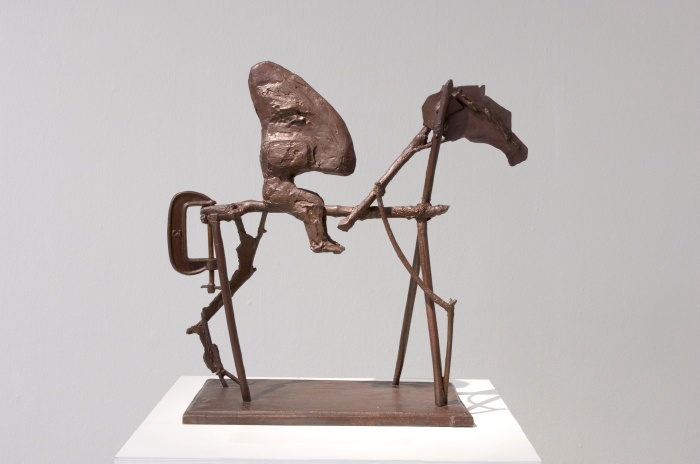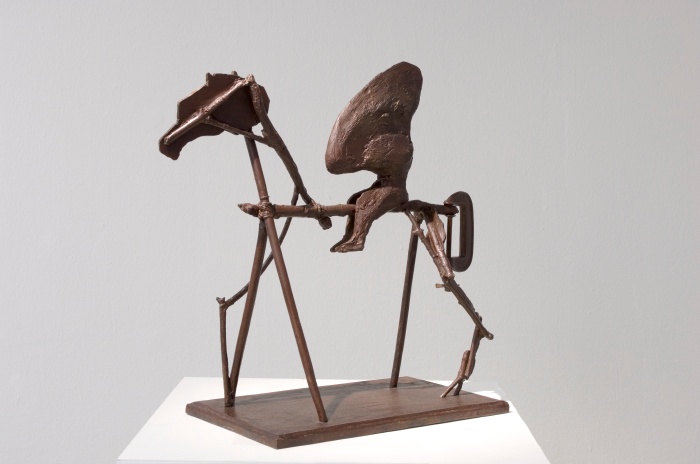William Kentridge

In Kentridge’s many drawings and sculptures of The Nose, a character from Gogol’s short story (1836), the appendage appears on horseback. The horse finds its historical parallel in the mounted heroes of the Soviet Union so often illustrated in social-realist paintings. But where those painted steeds are the expression of their riders’ political power, Kentridge asks what an anti-heroic horse might look like – a horse, as he says, “that would have the least right to be on monuments.” In answer to social realism – in rebuttal – he gives us only the barest suggestion of a horse, a minimal and residual animal made from studio leftovers. “A head, a curve for a neck, some straight lines for legs and a flourish for the shape of a tail,” he says, “are all we need not only to convince ourselves we are seeing a horse, but for us to imbue the horse both with the attributes of the live animal and the associations of their images.” In this sculpture, the animal’s body is made from sticks, its head and neck described in crude cut-out, its tail a metal clamp. However undefined or inexact its image, it remains undeniably recognisable as horse.
b.1955, Johannesburg
Performing the character of the artist working on the stage (in the world) of the studio, William Kentridge centres art-making as primary action, preoccupation, and plot. Appearing across mediums as his own best actor, he draws an autobiography in walks across pages of notebooks, megaphones shouting poetry as propaganda, making a song and dance in his studio as chief conjuror in a creative play. Looking at his work, a ceaseless output and extraordinary contribution to the South African cultural landscape, one finds a repetition of people, places and histories: the city of Johannesburg, a white stinkwood tree in the garden of his childhood home (one of two planted when he was nine years old), his father (Sir Sydney Kentridge) and mother (Felicia Kentridge), both of whom contributed greatly to the dissolution of apartheid as lawyers and activists. The Kentridge home, where the artist still lives today, was populated in his childhood by his parents’ artist friends and political collaborators, a milieu that proved formative in his ongoing engagement with world histories of expansionism and oppression throughout the 20th century. Parallel to – or rather, entangled with – these reflections is an enquiry into art historical movements, particularly those that press language to unexpected ends, such as Dada, Constructivism and Surrealism.
Moving dextrously from the particular and personal to the global political terrain, Kentridge returns to metabolise these findings in the working home of the artist’s studio, where the practitioner is staged as a public figure making visible his modes of investigation. Celebrated as a leading artist of the 21st century, Kentridge is the artistic director of operas and orchestras, from Sydney to London to Paris to New York to Cape Town, known for his collaborative way of working that prioritises thinking together with fellow practitioners skilled in their disciplines (for example, as composers, as dancers). Most often, he is someone who draws, in charcoal, in pencil and pencil crayon, in ink, the gestures and mark-making assured. In a collection of books for which A4 acted as custodian during the exhibition History on One Leg, one finds 200 publications devoted to Kentridge’s practice. In the end, he has said, the work that emerges is who you are.
